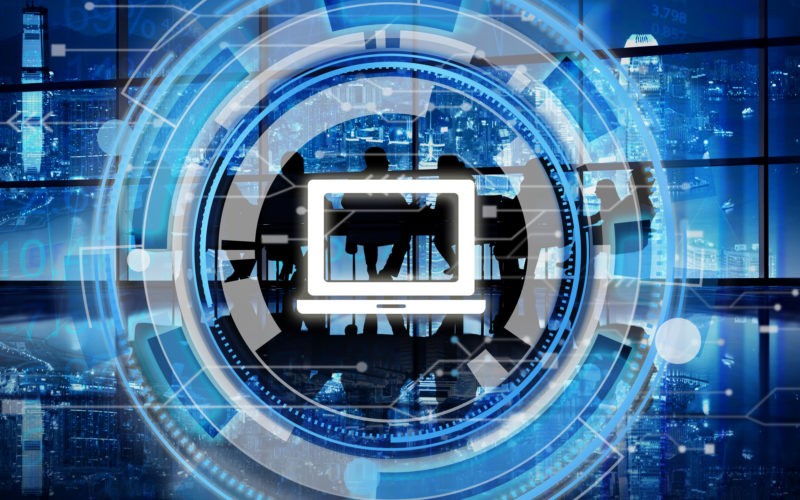74% of companies fail at legacy modernization. That means that they experience wasted budgets, mounting risks, and stagnation. Legacy systems helped build your business — but now, they hold it back.
Some might think that systems written in old code are safe but in reality, they are primary targets for exploits. They rely on outdated dependencies, unsupported libraries, or old protocols that no longer receive security patches. For example, the WannaCry ransomware attack exploited unpatched Windows systems running outdated code, even though Microsoft had released patches months earlier.
If you’re facing these challenges, legacy system migration services can help you transition smoothly from old infrastructure to secure platforms. If using the right approach, you can avoid common pitfalls and achieve better performance and security.
This guide breaks down legacy application modernization in plain language. You’ll learn what legacy systems are, why they’re a risk, and how to modernize them in 7 clear steps.
What is a Legacy System?
A legacy system is an outdated software or hardware still in active use. Think old business apps, databases, or servers that haven’t been updated in years. They may still work, but they’re slow, expensive, and often insecure.
They might run on unsupported platforms. They might need rare developer skills to maintain. Or they just don’t play well with modern tools and workflows. They’re often written in outdated languages like Delphi or Visual Basic, making upgrades or integrations difficult.
What is Application Modernization?
Application modernization is updating legacy software so it works with modern infrastructure, tools, and standards. It is about strategically upgrading to achieve efficiency, security, and growth.
It’s like renovating a house — you keep the solid structure, but upgrade everything inside.
Modernization means:
- Rewriting outdated code
- Moving to the cloud
- Integrating APIs
- Updating databases and UI
Done right, you retain the business logic while improving performance, security, and scalability.
The key thought is that modernization isn’t an expense – it is an investment in longevity. It helps a business stay competitive and meet changing user needs.
Why Modernize Legacy Systems?
Modernization isn’t just an IT task — it’s a strategic business move. Upgrading old systems isn’t about keeping up with tech trends. Here’s what you gain:
- Better Security – Old systems don’t get updates. New ones come with patches and defenses.
- Faster Performance – Modern systems load faster and scale better.
- Higher Productivity – Updated tools help your team work smarter.
- Improved Customer Experience – Sleek interfaces and automation win customer loyalty.
- Feature Expansion – You can add features and improvements more easily.
Businesses need to change constantly to meet customer expectations that evolve faster than legacy systems can adapt. Also, market regulations dictate their rules, demanding quick response.
7 Steps to Legacy Application Modernization
1. Assess the Current System
Start with a thorough audit. List all your legacy systems, what they do, and what they depend on. Talk to people who use them daily — IT teams, business users, and stakeholders. Find the pain points. You’ll uncover technical debt, security risks, and inefficiencies. That gives you a clear starting point for modernization strategy.
2. Identify Business Priorities
What are your goals — lower costs? Faster delivery? Cloud adoption? Set measurable objectives. For example, you might want to “cut server costs by 30% with cloud migration” or “reduce transaction processing time by 50%”.
Align modernization with the chosen strategy.
3. Choose a Modernization Approach
Different systems need different fixes. You should pick the right approach for your budget, risks, and future plans. Options include:
- Rehosting (lift and shift) – moving the systems as-is to the cloud. This is fast, cheap, and requires low effort.
- Replatforming (minor code changes) – making small changes for better performance. For example, upgrading the database.
- Refactoring (major changes) – cleaning up and restructuring code without changing what it does.
- Rewriting (complete rebuild) – if the system is too outdated, you can opt for this option. It includes starting over from scratch.
- Replacing (new system altogether) – if building your own system doesn’t make sense, a business can buy a ready-made solution.
4. Select the Right Tools and Stack
As you set your goals and approach, you can choose tools based on them. Going cloud? Pick your provider, whether it is AWS, Azure, or Google Cloud. Choose languages and databases that fit your needs. And opt for APIs and microservices where you can as they make future changes easier.
5. Build and Test
Don’t do everything at once as this can disrupt the whole process. Instead, modernize step by step. You can start with low-risk parts to test the process and your approach.
Run security tests, check performance, and make sure everything works smoothly.
6. Train Teams and Migrate Data
New systems work only if people know how to use them. Train your team, and don’t forget to create or update documentation.
Check your data before migrating to avoid data corruption or loss. Move data in small chunks. This helps reduce downtime.
And after the migration is done, double-check everything to make sure that nothing broke.
7. Monitor and Improve
Modernization doesn’t stop after the launch. You need to track performance, fix issues, and evolve with user feedback and tech trends.
Use monitoring tools like Prometheus or New Relic. They track system health and user feedback.
Measure results, and improve the system where needed. Data-driven optimization always wins. Modern systems generate actionable metrics, such as user engagement patterns, performance issues, and security threat detections. This is the scheme:
Measure → Identify Improvements → Implement → Repeat
Remember to constantly update, as this is what keeps your system modern.
Final Thoughts
Modernizing isn’t easy — but it’s necessary. Legacy systems cost more than you think. A smart modernization plan cuts risk, boosts growth, and future-proofs your business.
Technology never stops advancing. Be aware that the average enterprise software stack becomes obsolete in 3–5 years. Emerging trends can transform workflows. For example, early cloud adopters often achieved 30–50% cost savings over on-premise solutions. The exact savings depend on factors like cloud services used, integration depth, and operational efficiency. Being up-to-date helps you stay competitive in the market.












